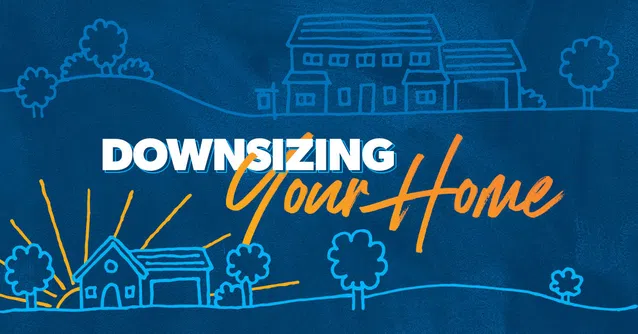12 Downsizing Tips for Forward-Thinking Seniors
You’ve decided to make the move for fresh, new surroundings, where you’ll be free from the care of a house and yard. Yet, the transition can be bittersweet; you’ll need to shed belongings, and the task may seem overwhelming. It might be refreshing to hear, then, that downsizing is much more manageable when you’ve got helpful friends and professionals on your side.
We at The Osborn have helped hundreds of forward-thinking older adults like you seamlessly transition into their best next step at our welcoming Life Plan Community in Rye, N.Y. Here are a few tips, which we’ve broken into three stages, to help you get a strong head start.
The Declutter Stage
Even if you haven’t chosen exactly where you’ll be living, you can begin planning for your move as early as a year before. Start decluttering your current home well before you think about furnishings and cherished possessions.
- Ask your adult children to remove what they’ve been storing in your basement or attic. This includes childhood treasures, as well as large items, like bikes, sports gear, and furniture.
- Aggregate all your important papers (passports, wills, deeds, medical records, etc.) in one place, and tell a close family member where they are. Discard unnecessary paperwork, but if you are unsure about what you must keep, ask an accountant or attorney.
- Cull through your closets and drawer because a smaller home may have less closet space. Consider donating anything that you haven’t worn in more than six months.
- Determine the household items you don’t actually use. Since you’ll no longer be doing home repairs and yardwork, lawnmowers are obviously “no need” items; they and other tools can be sold, given away, or donated. As a “test,” put kitchen tools and gadgets in a box and return them to their normal places only after you’ve used them. Use the same “test” for small appliances like waffle irons, sandwich presses, juicers, and ice cream makers.
- Limit de-cluttering efforts to monthly or weekly sessions, working no more than two hours at a time. Dividing these tasks into small chunks makes them less burdensome.
The Planning Stage
Once you have chosen a new independent living residence, you can decide which major household items to take along with you.
- Know exactly how much space you have in your new domain, whether it’s one room or five. Measure accurately, noting windows, doors, shelving, and closets, and take a thorough look at the floor plan. Visit your new place several times, so you can envision which pieces of furniture are essential. Some furniture may serve multiple purposes, such as a decorative chest that doubles as a TV stand.
- Measure larger pieces to determine how they might fit into your new floor plan. Furniture for apartments and small homes is designed on a smaller scale. So, if your current sofa is too wide or bulky, you may want to swap it for a new, just-right seating piece.
- Find new homes for furniture that you cannot keep. Give it to friends or family, donate it to charity, or try selling it locally through ads or websites. If you have valuable antiques or artwork, consult with an appraiser or estate auction house before selling.
The Sorting Stage
Sorting the remaining belongings and personal mementos may be the most difficult stage of transitioning to your new home. But it can also be energizing and inspiring as you prepare for this exciting next chapter. With that in mind, and to round out our list:
- Photograph large items you must part with, like grandmother’s big, brass clock. You can retain memories of the place these items had in your life.
- Eliminate items you definitely do not want, but don’t sort exhaustively through remaining photographs and small collectibles. These store easily, and you may choose to display some of them once you are in your new home.
- Invite family and friends to participate in sorting and sharing sessions. Mementos evoke memories, and memories are most precious when shared with loved ones.
- If you have time to complete all these stages before your move, and if finances permit, you may want to consider hiring a move manager or professional organizer. Most realty companies, senior centers, and senior living communities in Westchester County can refer you to downsizing pros.
BONUS TIP: Click here to learn more about The Osborn's Easy Move Program, which offers up to $12,000 in incentives for qualifying residents.
Looking ahead even further
Life Plan Communities, like The Osborn, offer vibrant independent living complemented by a complete continuum of care to help you thrive through whatever the future may hold. Plus, you can toss the packing tape aside for good, settle into your new abode, meet some like-minded friends, and have the family over to visit!
To learn more about The Osborn, a private, not-for-profit Life Plan Community conveniently located in Westchester County, click here or call 888-9-OSBORN today.
